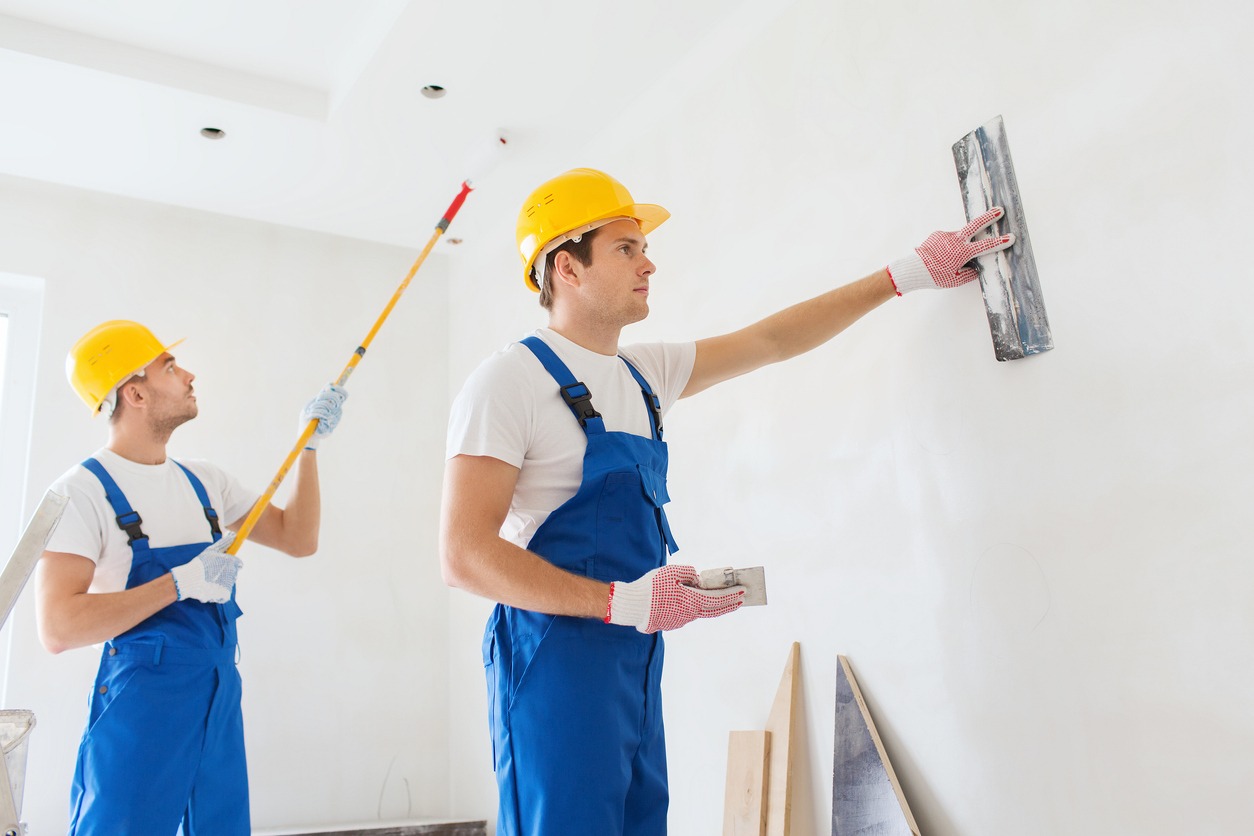Getting your house painted is a significant investment, and it’s important to know what you’re paying for. To make informed decisions, you need to understand and evaluate painting estimates. This can also help you avoid unexpected costs and ensure you get the best value for your money.
Let us walk you through the critical components of a painting estimate so you can confidently compare offers from different contractors.
The Basics of a Painting Estimate
A painting estimate is a detailed breakdown of the costs associated with your painting project, designed to give you a clear picture of what the job entails and how much it will cost. Here’s what you need to know about the common elements included in an estimate:
Labor Costs
Labor is often the most significant part of any painting estimate. This includes the time and effort the painters will spend on your project. Ensure the estimate specifies how many painters will be working, the expected duration of the job, and the hourly or daily rates.
Some contractors charge by the hour, while others provide a flat rate for the entire project. Hourly rates can give you flexibility, but a project-based price can offer more predictability. Be sure to ask how labor costs are calculated and what the estimate includes.
Materials and Supplies
This section covers the cost of paint, primer, brushes, rollers, tape, and other supplies needed to complete the job. Higher-quality paints and materials might cost more upfront but can save you money in the long run because they last longer and require fewer touch-ups.
The estimate should detail the type and brand of paint, primer, and any additional supplies like brushes, rollers, and tape.
Surface Preparation
Proper surface preparation is crucial for a lasting paint job. This part of the estimate should outline any necessary prep work, such as sanding, scraping, caulking, and patching holes or cracks. Prep work ensures the paint adheres properly and looks smooth and even. These tasks add to the overall cost but are essential for a high-quality finish. If you want to minimize costs, you may want to do the prep work yourself, but talk to your contractor first before doing so.
Number of Coats and Type of Paint
A good estimate will specify the number of coats of paint to be applied and the type of paint being used. Two coats are generally standard for a durable finish, but some surfaces might need more. The type of paint—whether matte, satin, or gloss—can also affect the final cost and appearance. Make sure these services are listed and priced in the estimate.
Cleanup and Disposal
Once the painting is done, there’s usually a mess to clean up. The estimate should include costs for cleanup and proper disposal of any hazardous materials. This ensures your property is left tidy and safe once the work is completed. Cleaning and disposal costs should be included in the estimate to ensure a tidy and safe environment once the job is done.
Key Factors That Influence Painting Estimates
Several factors can influence the final price when you receive a painting estimate. Here are some key considerations:
Size and complexity of the project
The larger the area to be painted, the more time and materials will be needed, which increases the cost. Additionally, intricate designs, multiple colors, or detailed trim work can add to the complexity and cost of the project.
Condition of the surfaces to be painted
If your walls or surfaces are in poor condition, they may require extensive prep work like sanding, patching, or priming. The better the surface is prepared, the better the paint will adhere, but this prep work can add to the overall cost.
Quality and brand of paint and materials
Not all paints and materials are created equal. Higher-quality paints and well-known brands often come at a higher price but can offer better coverage, durability, and finish. Investing in suitable quality materials can save you money on future maintenance.
Location and local market rates
Where you live can significantly impact painting estimates. Labor and material costs can vary widely depending on your geographic location and local market rates. Expect to pay more in high-cost areas than in regions with a lower cost of living.
Time of year and weather conditions
Believe it or not, the time of year can affect painting estimates. Many contractors offer discounts during their off-peak seasons, typically in winter. Weather conditions also play a role; ideal painting conditions are crucial for exterior jobs, which might delay the project and affect costs.

How to Request and Compare Estimates
Getting multiple estimates is crucial to ensure you’re getting the best deal. Here are some tips to help you navigate the process:
Ask for recommendations
Start by asking friends, family, or neighbors for recommendations. Then, contact at least three different contractors to request estimates. Provide each one with the same information about your project to ensure comparable quotes.
Ensure all estimates cover the exact scope of work.
When comparing estimates, it’s essential to ensure they all cover the exact scope of work. This means they should include similar tasks, materials, and conditions. If one estimate includes extra services that others don’t, ask for clarification or request that all contractors provide estimates for the same scope.
Get a detailed, written estimate.
Always get a detailed, written estimate. This should outline the costs for labor, materials, prep work, number of coats, cleanup, and any other relevant details. A written estimate helps prevent misunderstandings and provides a clear agreement of what to expect.
Evaluate the contractor’s credibility.
Don’t just go with the lowest price. Consider the contractor’s reputation, experience, and reviews. Check online reviews, ask for references, and see examples of their previous work. A reputable contractor might charge more but can offer better quality and reliability.
Red Flags in Estimates
When reviewing painting estimates, watch out for these red flags that might indicate potential problems:
Extremely low or high estimates compared to the market average
If an estimate is significantly lower or higher than others you’ve received, it could be a sign of trouble. Extremely low bids might indicate shortcuts or low-quality materials, while high bids could be inflated without justifiable reasons. Compare estimates to the market average to spot any outliers.
Lack of detail or vague descriptions of work
A good estimate should be detailed and specific. Vague descriptions or lack of detail can lead to misunderstandings and unexpected costs later on. Ensure the estimate clearly outlines the scope of work, materials, labor, and additional services.
Unlicensed or uninsured contractors
Hiring an unlicensed or uninsured contractor can be risky. If something goes wrong, you might be left without recourse. Always verify that your contractor is licensed and carries appropriate insurance to protect yourself and your property.
Contractors who request large upfront payments
While a small deposit is typical, be cautious of contractors who request large upfront payments. This can be a red flag for potential scams or financial instability. A reputable contractor will typically ask for a reasonable deposit with the balance due upon completion of the work.
Questions to Ask Contractors

When you’re reviewing painting estimates and speaking with contractors, it’s important to ask the right questions. Here are some key questions to help you get all the information you need:
How long will the project take to complete?
Understanding the timeline is crucial for planning. Ask the contractor for an estimated start and finish date. Knowing how long the project will take helps you manage your expectations and schedule.
What type and brand of paint will be used?
The type and brand of paint can affect the longevity and appearance of your paint job. Ask the contractor to specify the paint brand and type they plan to use and why they recommend it. This ensures you’re getting quality materials suited to your needs.
How will surface preparation be handled?
Proper surface preparation is critical to a successful paint job. Ask the contractor to explain their preparation process, including how they will handle sanding, patching, and priming. This helps ensure you get a smooth and durable finish.
What is included in the warranty or guarantee?
A good contractor should stand behind their work. Ask about any warranties or guarantees offered and what they cover. This gives you peace of mind that any issues will be addressed even after completing the project.
Can you provide references from previous clients?
Hearing from previous clients can provide valuable insights into the contractor’s work quality and reliability. Ask for references and follow up with them to learn about their experiences. This can help you feel more confident in your choice.
Conclusion
Evaluating painting estimates can seem overwhelming, but you can make a well-informed decision by breaking it down into key components. Consider factors such as labor costs, materials, surface preparation, and additional services. Watch out for red flags like vague descriptions and unlicensed contractors. Also, ask the right questions to help you gather all the necessary information.
If you’re ready to talk to a contractor in the Bay Area, contact Custom Painting, Inc. today for a free quote. You may also call us at 925-294-8062 if you have questions before setting up an appointment to discuss your project. We can provide you with a detailed, professional estimate. Our experienced team is here to help you transform your home with quality workmanship and top-notch service.

